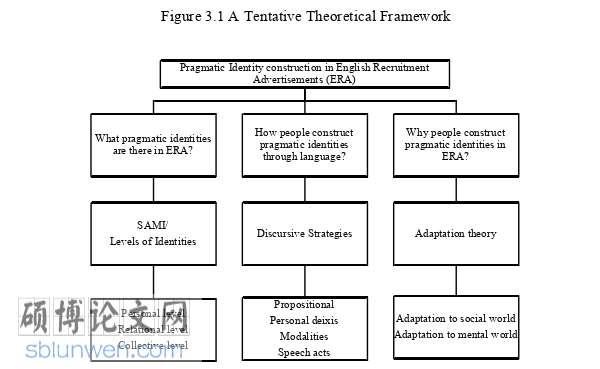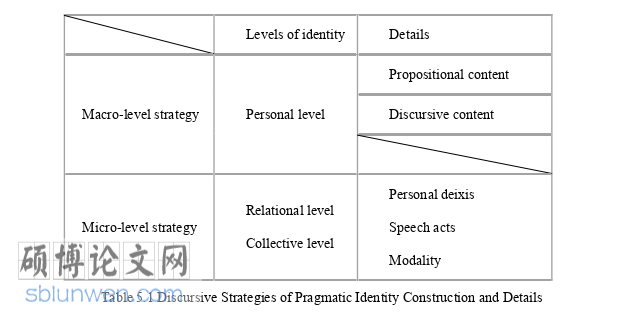Chapter One Introduction
1.1 Research Background
With the march of globalization, enterprises are hunting for competitive employees through various ways, such as Internet, newspaper or apps. In this information era, employers are increasingly posting online recruitment needs. Recruitment discourse plays an vital role in the current context, since a successfully-designed recruitment advertising can encourage more readers to apply for the posts. It is viewed as a tool connecting employers and candidates. Thus, discourse choices in recruitment advertising are paramount to both employers and applicants as the strategy to write a well-designed advertisement could indeed balance the demand and need in competitive job market.
Recruitment advertisement, a widespread channel of communication, contributes to both recruiters and applicants. Specifically, the company desires to find and recruit the best match for opening posts, and then, job seekers are likely to search for the most satisfied position so as to achieve a win-win result. In the fierce job market, it serves as the medium of delivering abundant information to potential applicants and propagating positive image of companies. The previous studies reveal that the advertising discourse has been a topic of great interest in all sectors. Advertising, in fact, is a publicized method of transforming information to the society openly. And recruitment advertising serves as a special branch of it, undoubtedly possessing notable features.
In view of its communicative genre, the identities of advertisers and readers become more crucial in the study of recruitment advertisings. Gao (2005) and Maynard (1995) also thinks that advertisings discourse is the carrier of advertisers. Wang (2013) believe that advertising discourse presents the communication between advertisers and readers, which testifies its essence of interaction. That is to say, an advertising is a process of communication between advertisers and readers.
.............................
1.2 Significance
The current study exploring the pragmatic identity construction in English recruitment advertisements has the following significance theoretically and practically.
Theoretically, the significance of this study is to enrich the identity theory with recruiting advertisement discourse. Discourse is the carrier of identity, and identity can influence the production of discourse. The study of identity is mostly correlated with business discourse, public speech or media texts. As a mixed type of discourse, recruitment advertisings can renew the field and context with a variety of genres. The first is the business genre, recruitment advertisements possess promotional character in recruiting context due to its demand of talents. The second is the public features. Recruitment advertisements are inevitably public to the wider job market so as to attract more potential applicants. The third is the media style. It's a rather special media discourse posted on the recruitment websites or newspapers. It performs the purpose of spreading the key information and publicizing the positive image of company. According to some pilot study, recruitment advertisement is widely-used text that often constructs variable identities. Except for the original identities including recruiters and applicants, some pragmatic identities will emerge responding to the call of practical purposes. The thesis determines to develop the investigation of identity from a refreshed perspective. Indeed, it is this mixed type of discourse that enables to make a deep and thorough exploration into the identity. Thus, the combination between recruiting discourse and pragmatic identity construction is rational and necessary.
.........................
Chapter Two Literature Review
2.1 English Recruitment Advertisings
2.1.1 A Brief Introduction to English
Recruitment Advertisings Recruitment advertising is not only comprised of job postings, but also of PR and other information concerning company. It is designed to create interest of readers as well as find employees for the available posts. Under the context of competitive talent market, recruitment advertising is of significance to attract appropriate candidate and to help applicants find out proper posts. Thus, it has developed into a mature genre with exceptional features.
First, it can be regarded as an institutional text. It’s a kind of advertisement only used for recruitment in company. As the first channel of communication, it would construct interpersonal and power relation between recruiters and applicants. Second, it possesses professional and settled mode. Recruitment advertising usually covers the title, profile, job description, requirements, benefits and application process. As its main readers are putative applicants, recruitment advertisings will use plain, simple and attractive language to convey latest information quickly. Thirdly, its aim is different from ordinary advertisement. Recruitment advertising intends to propagandize the excellent and positive image of company as well as to attract appropriate and outstanding candidates for available posts.
2.1.2 Previous Studies on English Recruitment Advertisings
The few studies that have been conducted have focused on the transitivity, modality or metafunctions of English Recruitment Advertisings. For example, Wang (2005) conducts a transitivity research on English recruitment advertisings. Wang aims to conduct a deep exploration of recruitment advertisings so as to increase the cognitive ability towards language. Among those six types of processes, material process is the most salient. The purpose of every process is to attract readers and excellent applicants.
......................
2.2 Previous Studies on Identity and Its Construction
Throughout the past studies, many aspects of identity have been salient, including its definition, classification, significance and usages in society. Generally, these findings can be explained from three views in chronological order as follows.
2.2.1 In the Aspect of Social Constructionism
Identity has been a hotly-debated topic in the field of discursive analysis, sociology and communication studies. The definitions of identity are various from different perspectives. It is noted that social constructionism is a turning point. In the beginning, the identity could be defined strongly or weakly. The former one means that identity is basic and everlasting ego, and conversely the latter refers to an identity that is multiple not single, dynamic not permanent, complicated and contextually-constrained.
As the social constructionism occurs in academia, the above traditional concepts are overturned by the new identity theory (Hall, 1996). However, their definitions have some common view which will be stated as follow. Firstly, identity is not a given product but a process of construction. Antaki and Widdicome (1998:1) view identity as a final result of joint activity and discursive act. Secondly, identity occurs under a concrete and specific context. Grad and Rojo (2008) suggest that individual will create the identity and social domain in line with corresponding context during the interactive process. Thirdly, identity is not simply originated from single person, but from the interactive process and contextualization. It is found that there exist conventional connections between certain identity and related activity, power and duties. Finally, the process of identity construction needs to employ interactions.

语言学论文怎么写
.............................
Chapter Three Theoretical Foundation .......................................... 183.1 Simon's Self-Aspect Model of Identity (SAMI) ............................... 18
3.2 Levels of Identity by Brewer and Gardner .................................. 20
3.3 Verschueren's Adaptation Theory ...................................... 21
Chapter Four Pragmatic Identities in Recruitment Advertisements ................................ 26
4.1 Pragmatic Identities of Recruiters .................... 26
4.1.1 Personal Level ........................................ 26
4.1.2 Relational Level ........................................... 28
Chapter Five Pragmatic Identity Construction in English Recruitment Advertisements.................38
5.1 Discursive Strategies Used for Pragmatic Identity Construction .......................... 38
5.1.1 Macro-Level Discursive Strategy ................................... 39
5.1.2 Micro-Level Discursive Strategy ...................................... 45
Chapter Five Pragmatic Identity Construction in English Recruitment Advertisements
5.1 Discursive Strategies Used for Pragmatic Identity Construction
Pragmatic identities of three levels in recruitment advertisements have been explored in the previous chapter. This section is intended to settle down the second question of how the pragmatic identities are constructed through discursive strategies. As Tracy (2002) noted, speech acts are essentially discursive practice. There are correlations between discursive practice and identity, which means one's identity will influence his discursive choices, and in turn, one's discursive practice will define his identity. In light of Chen (2017), pragmatic identity can be constructed by many kinds of discursive practices, ranging from macro-level including code switching, style choice, discourse content to micro-level including speech acts, address forms, grammar, lexical words, etc. It reveals that the construction of pragmatic identity can be analyzed from the perspective of discourse. Consequently, this section sets out to investigate the discursive practices used to construct pragmatics identities, which will be divided into two categories: micro-level and macro-level.
Accordingly, the author concludes the different discursive strategies used to construct identities of three levels in table 5.1. The following sections will make both quantitative and qualitative analysis.

语言学论文参考
Chapter Six Conclusion
6.1 Main Findings
Combined with qualitative and quantitative research, the thesis explains and analyzes research questions mentioned in chapter one.
Firstly, the first question will be answered from three aspects. There are three levels of pragmatic identities constructed in recruitment advertisings, including personal level, relational level and collective level. They can also be called as personal identity with distinctive features differing from others, relational identity concerned with interaction and interpersonal relation, as well as collective identity characterized by group common background. Moreover, the thesis made a comprehensive study since both participants in the recruitment advertisements are considered. From the perspective of recruiters, they tend to construct personal and relational identities for themselves. Generally, recruiters are likely to describe themselves as capable, outstanding and leading representatives. Many positive images are integrated into personal identity so as to show the responsibility, ability and success of those companies. Besides, the relational identity also occupies a large proportion since interpersonal relation matters in the communication between recruiters and applicants. Although some relational identities are deviated from recruiters, the identities of helpers or team partners indeed create harmonious relation. From the perspective of applicants, collective identities for them are mainly concerned with jobs. With the aim of providing clarity on recruiting demand, recruiters will construct multiple collective identities that match with job requirements, for instance, master, technician, accounting leader and coach. All of these identities reflect the requirements on background and related experience. All in all, both parties have pragmatic identities distributed in three levels, but they have different focus.
reference(omitted)
